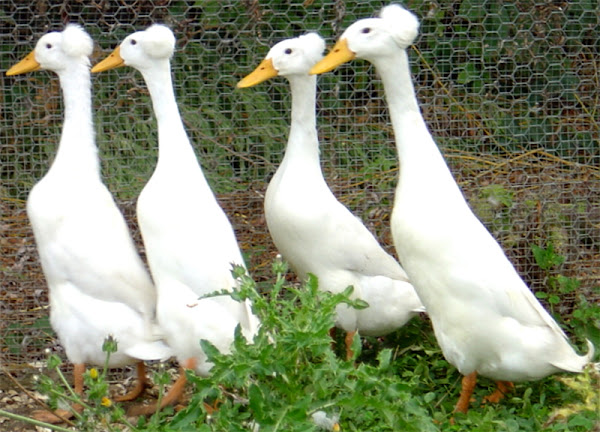Bali Duck

Scientific Name
Anas platyrhynchos domesticus
Alternative Names
Balinese Crested Duck, Crested Runner Duck
Measurements
| Feature | Male | Female |
|---|---|---|
| Length | About 60–70 cm (24–28 in) | Slightly smaller |
| Weight | 2.25–2.75 kg (5–6 lb) | Slightly lighter |
| Egg Production | 120–250 eggs/year | — |
Status
A rare domestic breed native to Bali, Indonesia. It is mainly kept as a pet or ornamental bird rather than for commercial egg production.
Identification
The Bali Duck has a slim, upright body and stands at a 60–70° angle to the ground. It looks like the Indian Runner Duck but can be recognized by the fluffy crest on its head. It comes in several colors, with white, brown, and Mallard-patterned being the most common.
Voice
Soft, high-pitched quacks typical of light duck breeds.
Diet
Eats a mix of grains, insects, aquatic plants, and small invertebrates.
Distribution
Mostly found in Bali, with small populations kept by hobbyists in other countries.
Habitat
Prefers calm ponds, rice paddies, and small water bodies in warm tropical climates.
Breeding
The crest trait is caused by a genetic mutation. When two crested ducks breed, many embryos die before hatching due to skull deformities. Breeders often pair crested and non-crested ducks to increase survival, resulting in about half of the ducklings having crests.
Conservation
Uncommon outside Bali. Conservation efforts focus on maintaining healthy breeding lines without the harmful genetic effects linked to the crest.
